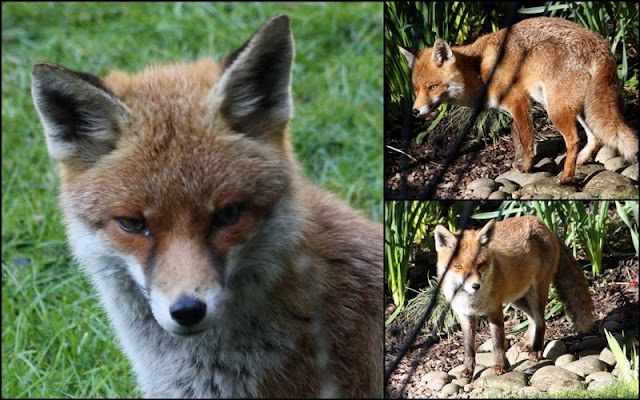For many years the local urban foxes have used our garden as their nightly route in search for a free meal around the local streets. Their high pitched 'yap .. yap' calls, howling and barking is often heard in the wee small hours. Very occassionally we get a fleeting daytime glimpse when one slinks down the garden path and disappears through the hedge or over the boundary fence but today was a different scenario.
Just before midday today I spotted a young Reynard creeping very slowly through the garden stopping every now and then to sniff around various plants while also showing some interst in the movement and calls of the Blue Tits feeding overhead. I rushed upstairs for the camera and when I returned downstairs I was surprised to see this animal still moving closer to the house. This series of shots were taken through the window which wasn't ideal but I didn't want to scare it!
He or she eventually crossed our small patch of lawn and settled down just beneath the patio whilst trying to appear inconspicuous beneath the surrounding foliage.
Obviously aware that someone was watching! This soulful looking creature eventually decided to sneak out of the garden but this wasn't to be the only encounter ..... watch this space. FAB.

















